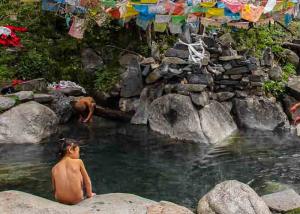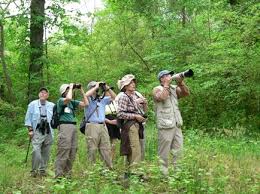Tour Overview
Before the construction of motorable roads to Bhutan, different valleys in the country was connected by mule tracks. These tracks are still usable and offers a good challenge to for hikers.
Tour Details
Day 1: Paro, Bhutan and Thimphu
Arrive in Paro, Our morning flight brings us to Bhutan’s emerald-green Paro Valley at 7,500 feet, After lunch, we head out through idyllic countryside of terraced rice fields interspersed with rhododendron and pine forests as we make a 2.5-hour drive to Thimphu, the tiny capital at 7,600 feet. We gather for a welcome dinner this evening. Overnight at lodge in Thimphu.
Day 2: Thimphu Day Hikes
A one-hour hike this morning brings us up to Tango Monastery, a monastic school and retreat built in the 15th century. The monastery is the residence of the Druk Desi Gyaltsen Tenzin Rabgye, a lama who is a reincarnation of the 16th century monk who founded Tango (tango means horse’s head; the monastery is named for a rock formation on the mountain it is built on). Tango’s inner courtyard is beautifully painted in bright colors, with lovely views stretching across theThimphuValley. We descend and head by road to the Bagana bridge for a two-hour hike on a fairly level trail through beautiful riverside villages, with a picnic lunch. Overnight at lodge.
Total Hiking Time: About 3 Hours
Day 3: Thimphu, Dochu La and Punakha
We visit the Arts and Crafts School andFolkHeritageMuseuminThimphu, then head out of town for a spectacular 3-hour drive to Punakha, crossing theDochu La.
At 10,200 feet, the Dochu La is the highest mountain pass inBhutan, with fluttering prayer flags and more than 108 chortens (stupas) dedicated to Bhutan’s continued peace and happiness. On a clear day, the pass offers far-reaching views of the Bhutanese Himalayas.
After a hot lunch at a cafe atop the pass and time to savor the mountain views, we continue our drive to the Punakha Valley via the tiny village of Thinleygang(6,000′), the starting point for our afternoon hike of about 2.5 hours to Lobsakha village. Our hike brings us into a serene region of small villages interspersed with rice and wheat fields, and we may see farmers plowing fields with oxen as we hike along the trail. The forests on the mountainsides are home to barking deer, Himalayan black bear, and wonderful birdlife, from Himalayan barbets to cuckoos. Overnight at Punakha.
Total Hiking Time: About 2.5 Hours
Day 4: Khamsum Yuley Namgay Chorten and Punakha Dzong
ThevillageofNezigangis the starting point for our gradual ascent through cultivated fields and little hamlets to the Khamsum Yuley Namgay Chorten, a shrine recently built by the royal family. The shrine is an elaborate structure with a rainbow of Guru Rimpoche images and superb views of thePunakhaValley. We hike back down and follow ancient riverside trails amid whitewashed farmhouses, with a picnic lunch en route.
In the afternoon, we visit the 17th century Punakha Dzong, Bhutan’s former winter capital, built in 1637 at the confluence of the Mo Chu and Po Chu (the Mother and Father rivers). The official name is Druk Pungthang Decchen Phodrang, which translates as “the palace of great happiness.”
Overnight at lodge.
Total Hiking Time: About 4 Hours
Day 5: Chimi Lhakhang, Wangde Phodrang and Phobjikha
A half-hour walk through mustard fields brings us to Chimi Lhakhang (lhakhang means temple), a monastery and fertility temple dedicated to Lama Drukpa Kuenley, a Tibetan Buddhist saint known popularly as the divine madman and considered a folk hero inBhutanfor his unconventional ways.
Later, we drive to the Phobjikha Valley(9,500′), with a visit en route to remarkable Wangdue Phodrang, a 17th century fortress-dzong perched on a spur.
We continue to the PhobjikhaValleyfor overnight at a lodge. Dinner and overnight at Phobjikha.
Day 6: Phobjikha Valley
We hike in the beautiful environment of the Phobjikha Valley, with its alpine setting on the western slopeof theBlack Mountains. The gold-roofed Gangtey Monastery (currently closed and undergoing renovation) sits on a prominent hilltop in the valley.
A flock of 200-300 black-necked cranes (Grus nigricollis) migrates to this valley from Tibet to spend the winter foraging of the valley floor. The cranes arrive some time around late October and stay through roughly mid-February. InBhutan, the cranes are considered harbingers of good luck and have long been respected by the residents of the valley. The cranes arrival signals to villagers that it’s time to pack up and move down to lower, warmer climes since the valley is snowed-in during the winter months. Overnight at lodge.
Total Hiking Time: About 3 Hours
Day 7: Thimphu
A five-hour drive brings us back toThimphu, recrossing the magnificent Dochu La Pass with lunch on the pass. This afternoon is free for independent exploration inThimphu. Overnight at lodge.
Day 8: Haa Valley and Yongto Camp
A three-hour drive brings us to the mountain-ringedHaaValley, opened to outsiders in 2001. The valley is set at about 9,000 feet in westernmostBhutanand dotted with traditional farmhouses adorned with traditional painted motifs.
After a picnic lunch along the river, we visit Lhakhang Karpo (temple of the white dove) and Lhakhang Nakpo (temple of the black dove), believed to have been built in the 8th century by the Tibetan king, Songtsen Gampo, after he sent two doves (one black and one white) to find a sacred place to build a monastery.
We continue to our campsite at Yongto at 8,760 feet. We camp tonight and tomorrow night in large, walk-in tents with cots. Our staff prepares our dinner. At camp, we can set up a rustic hot-stone bath for those who wish to enjoy a relaxing soak. Overnight at camp.
Day 9: Haa Valley and Yongto Camp
After breakfast in camp, we hike along the banks of the Haa River toward the Chumbi Valley. En route, we visit Gechukha Lhakhang temple and several villages. From the temple, a steep uphill hike of about 1,200 feet brings us up to Jamtey Gompa (10,500′). We enjoy our lunch here.
In the afternoon we visit Yangto Gompa, one of the largest in the Haa Valley, and hike down to Yangto village for an opportunity to meet the locals, perhaps sample some butter tea or the local wine. We continue our hike back to our camp at Yongto.
This evening, villagers from Yongto visit us at out camp perform their traditional dances. Overnight at camp.
Total Hiking Time: About 5-6 Hours
Day 10: Haa Valley and Kartsho Gompa
We hike gradually up through beautiful rhododendron and pine forests to Motori Ridge (10,000′) for spectacular views across the Haa Valley, and then descend to Damothang meadow through beautiful pine and rhododendron forests.
We continue on foot to Karsho Gompa, visiting this lovely monastery and enjoying lunch at a traditional farmhouse. After lunch, we descend to Kartsho village and Wangtsa village on our way to Rigsum Lodge, set above Haa town.
Total Hiking Time: About 5-6 Hours
Day 11: Paro and Paro Festival
A drive of about two hours bring us to Paro, where we freshen up at our lodge. Our activities today will be adjusted so that we can watch the festivities of Paro’s Tsechu Festival. Overnight at Paro.
Bhutan’s Festivals: It is an extraordinary privilege to witness one of Bhutan’s traditional Tsechu Festivals. Tsechu (pronounced say-choo) means tenth day because the festival is usually held around the 10th day of a month. The Tsechu celebrates events in the life of Padmasambhava, the 8th century master who brought Buddhism to Tibet and Bhutan. Such festivals are celebrated throughout Bhutan, but the ones in Paro, Thimphu, and Wangdi are among the most colorful.
Day 12: Taktsang Monastery
We hike up through pine forests festooned with Spanish moss to reach to the striking monastic retreat of Taktsang, the Tiger’s Nest, built into a sheer cliff face about 2,700 feet above theParoValley. Padmasambhava, the great 8th century Buddhist saint and teacher, is thought to have landed at this spot after flying over the mountains fromTibeton the back of a tigress, thus bringing the teachings of Buddhism toBhutan. Tonight we gather for our farewell dinner. Overnight in Paro.
Total Hiking Time: About 3 Hours
Day 13: Depart
After breakfast, we travel to Paro Airport for homeward-bound flights.
Services Offered
Daily Tariff (High tourist season):
US $250 per person per day on twin sharing basis during the Month of March, April, May, September, October, November
Daily Tariff (low tourist season):
US $ 200 per person per day on twin sharing basis during the month of January, February, June, July, August, December
All the tours can be customized and clients can request extra services.
SINGLE ROOM SUPPLIMENT US $ 30 PER NIGHT PER PERSON.
FIT surcharges 1 pax US $ 40 per day per person.
FIT surcherges 2 pax US $ 30 per day per person.
Cost Includes:
1. All Permits
2. Museum Fees
3. All Sightseeing
4. Walks and Hikes
5. Bottled Mineral Water
6. English Speaking Guide
7. Double/Twin in 2/3 Star Accomodation
8. Receive and Transfer to Airport
9. 3 Meals every day with Evening Tea
10. Toyota SUV for FIT & Toyota Bus for Group with Driver
Cost Does Not Include:
1. Insurance
2. Inbound Airfare
3. Gifts & Souvenirs
4. Alcohol & Beverages
5. Round Trip Air fare
6. Donations to Monasteries
7. International Telephone Calls
8. Tips for Guide, Driver & other Staff
Note:
TCB Licensed language Speaking Guides US $ 100 per day.
Tour price is based on High Season Tariff of US $ 250. For low season months it will be based on Low Season Tariff of US $ 200






